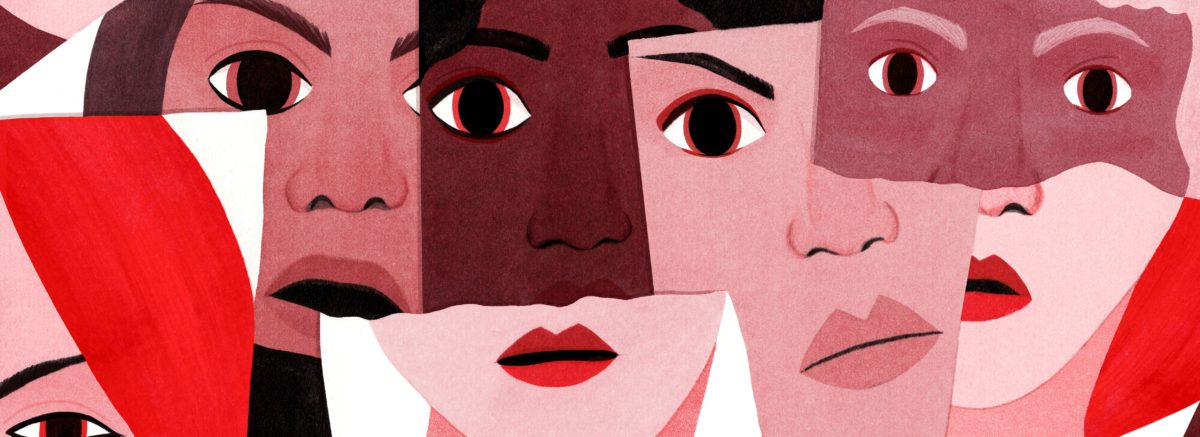#MeToo. Period.
“You hear me? ‘cuz I hear you!”
All it took was “one” word to collectivise the voices. So far muffled, so far layered, this far and to this extent – oppressed. The main agenda of the #MeToo hashtag was – to amplify. Like a hollering cry, millions of women from across the world flooded social media spaces. The intention was to share personal stories of instances of violence against women, sexual harassment, sexual assault. The aim was simple – to cut across boundaries and borders and feel “heard”. The experiences faced by women have been different but not disparate. They take their roots from the same harrows of patriarchy.
Sexual Harassment At Workplace: Indian Context
The year was 1997, the year is 2021. In this perilous lapse of 24 odd years a lot changed in India. Especially with regards to violence against women. The ghastly henious gang rape of Bhanwari Devi became a turning point. Right at the intersections of caste, class, patriarchy, working women, protection of child rights happened this incorrigible ‘crime’. The state failed its women, yet again. The loud chest thumping proclamations of “saving our women” , “protection of women” came undone. The entire structure fell apart, a mirror had been held up, the country was shook. State had failed in protecting its ‘own’ workers. The timeline is long yet the details cannot escape one’s gaze. Bhanwari Devi became the uncalled-for catalyst in this gigantic movement.
Vishakha Guidelines & POSH 2013
Indian government acting on the filed petition in the year 1997, came out with the Vishakha Guidelines. This was a monumental milestone in recognition of sexual harassment against women in workplaces. It mandates every employer to set up local and internal committees based on the number of employers and sectors. The Sexual Harassment of Women at Workplace (Prevention, Prohibition and Redressal) Act was enacted in 2013 in India. It applies to both the formal and informal sector.
Both, the #MeToo movement and also, this Act become the focal points to address the rampancy of gender based violence. It is without a doubt that the movement created a ‘space’ for women to speak up because – “time’s up”. The message was, your trauma holds valid, even if it took place years ago. We may never know what the survivor’s immediate situation and environment was when the incidents took place. But it is important to hold hands and say, yes we hear you.
However in India the movement failed to include a major chunk of women in the workforce leaving behind those from the informal sector. Bhanwari Devi, too, was a part of this informal sector. Would she have been brought to justice had the same incident taken place today?
Awareness and Normalization of Misogyny
More than the Act, there is a dire and urgent need to address the negligence of this Act in certain spheres. The lack of awareness on the part of women, societal pressure that pushes them to “ignore” or “silence”. On one hand is women’s labour, and on the other hand is the deplorable working conditions at the hands of supervisors. It is unbelievable how women are expected to simply accept this at the cost of their livelihood. The dignity of their labour being jeopardised in the domestic sphere as well as the workspaces.
The formal sector is taking steps to ensure compliance with the Act. Although that still isn’t enough because educating employees to sensitivity towards one another in a workspace should be the main agenda. The Act is a support albeit a powerful one.
The stigma around reporting, fear of retribution and the public shame, makes women hesitant of narrating these deeply personal narratives. They fear people might mishear, question and or cancel them. It fails the entire process because the society is still not ready to acknowledge the rampancy of the situation. Harassing an individual based on their gender is a larger part of the power politics at the hands of few men and also women. Who exploit this power for reasons none other than dominance over an individual’s freedom and autonomy in a workspace.
Categorizing Sexual/Verbal Harassment
Making lewd comments, jokes with innuendos, unsolicited demand for sexual favours, making sexually coloured remarks, showing pornography, physical contact and advances. Any unwelcome conduct including verbal sexual remarks, non-verbal conduct, threat to employment, are a few instances that amount to sexual harassment.
The overall effect on a woman’s mental health, emotional trauma is overbearing. We must not accept being singled out on the basis of our gender and blatant misogyny. Right at the outset and induction of employees into the workspace there needs to be training and workshops. A process explaining especially women their rights including the POSH Act 2013.
Contextualizing Sexual Harassment
A deeply personal anecdote that happened with a friend made me acquaint myself with the perils of sexual harassment at workplace. The undue toll and pressure that it took on her was insurmountable. She was unaware of the whom to approach and the redressal system available to her at the workplace.
My friend is a well educated, 22 year old recent graduate who just started a new job. Unfortunately she endured verbal sexual harassment at workplace and had to put her papers down. The environment was so toxic that she could not speak up until she left the workplace, she feared for her life and safety. Colleagues constantly passed sexually coloured remarks over her body, her privilege, and her competence. It made her question her space and role as a woman in this society. She was left with the lack of mistrust over workplaces, and supervisors at large.
Unfortunately she was harassed not only by the male manager, but also a female superior who tried to leverage the situation when she approached her with her story. Leverage here means to play office politics around it. All she was looking for was a safe space to help her analyse the situation and act accordingly. But instead people shamed her, called her names and insulted in front of an entire workforce in a workplace that was already misogynistic. They singled her out for daring to speak.
Many women experience similar situations and aren’t able to speak up just like her for reasons best known to them. They might fear the judgmental society and its scathing remarks. I am sharing this example with the hope it help people at large understand the gravity of the situation. That there are still layers and layers to peel through. My friend is now hyper vigilant at work.
Acting Upon The Act
The success of the Act is interdependent on raising awareness. Majorly on information campaigns, awareness, and gender sensitization. Laying a special emphasis on sectors with heightened risk of violence and harassment. Just enforcing the Act is not enough. We need effective measures on overseeing its implementation, reprimanding the employers and companies who aren’t complying with the law. The local committees take care of cases where there are less than 10 employees, and the informal sector. We need to publish the data and pay attention to when either reporting is too high or too low.
Most of all, believe women.
There are inconsistencies when it comes to the Act. It has multiple exclusions and loopholes and we need a separate space to address those. The sexual harassment situation varies greatly for each gender and it would not do justice to merely squeeze all of them in one post. Sensitive discussions cannot be tokenistic.
For survivors of sexual assault and violence, and allies, here is the Sayfty Survivors Toolkit carefully curated with the list of everything that one would need in times of distress.
About The Author

Ayushi Mehta (She/Her) is a masters student of Gender Studies at Ambedkar University, Delhi. She is an intersectional feminist and is passionate about women’s rights, gender, & policy related research. A trained Bharatanatyam dancer, who swears by Faiz’s couplets. Here is another blog by Ayushi that you might enjoy. Follow her on Twitter
Image Source: FreePick
